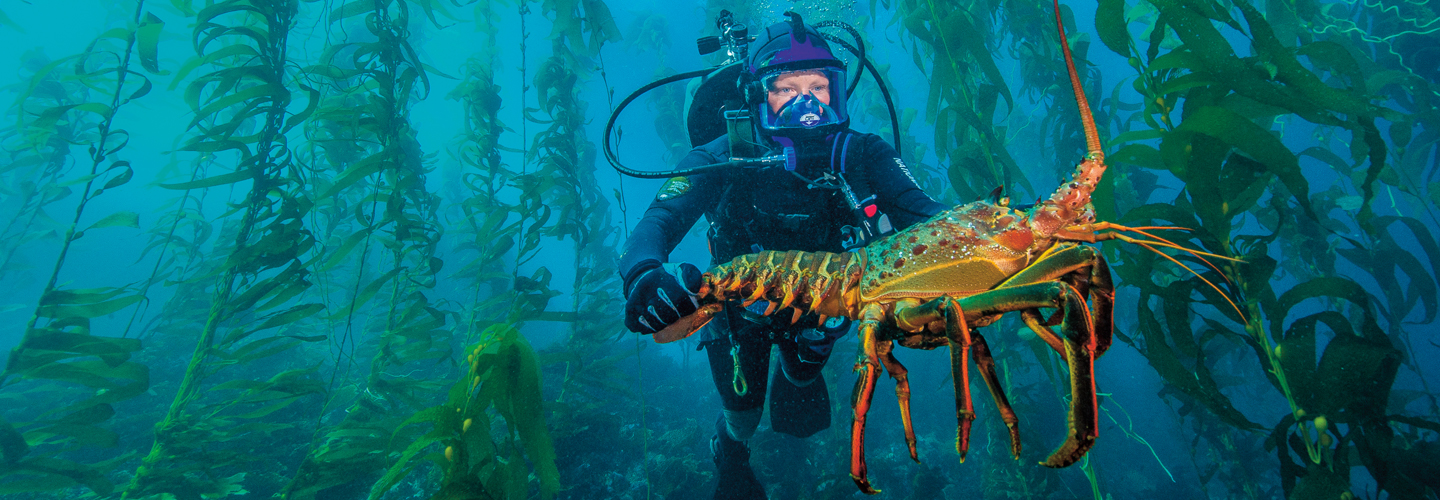Kelly Moore’s most memorable day at work was when a baby gray whale swam right past her. The park ranger was diving in California’s underwater kelp forests when she saw the 30-foot mammal. “I think my heart pumped right out of my chest,” she says. “Being in a kelp forest is like being nowhere else on the planet.”
Moore—a marine biologist, park ranger, and scuba diver—works at Channel Islands National Park. The park is a cluster of five islands off the coast of Southern California. There, she hosts school field trips and monitors the health of native plants and animals. She does it all while underwater.
Kelly Moore’s most memorable day at work was when she saw a baby gray whale. It swam right past her. The park ranger was diving in California’s underwater kelp forests. Then she saw the 30-foot mammal. “I think my heart pumped right out of my chest,” she says. “Being in a kelp forest is like being nowhere else on the planet.”
Moore is a marine biologist, park ranger, and scuba diver. She works at Channel Islands National Park. The park is a cluster of five islands. They are off the coast of Southern California. There, Moore hosts school field trips. She also monitors the health of native plants and animals. She does it all while underwater.

